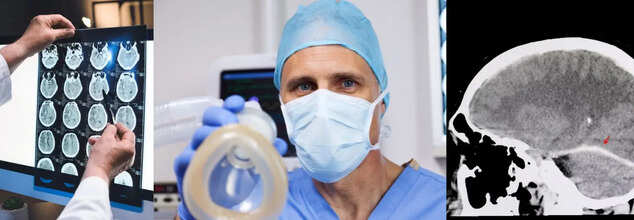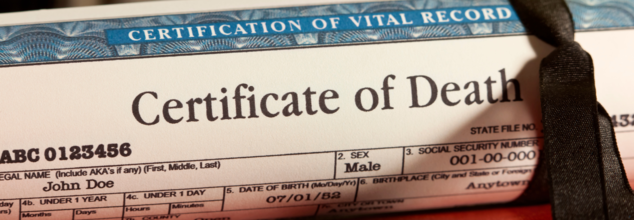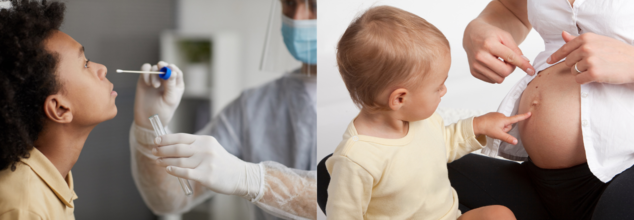- Health Conditions A-Z
- Health & Wellness
- Nutrition
- Fitness
- Health News
- Ayurveda
- Videos
- Medicine A-Z
- Parenting
- Web Stories
Boom Strikes: Why Are Cases Of Head Injuries Among Anesthesiologists Growing?

Credits: Canva
One moment, Dr Cornelius Sullivan was focused on a patient during surgery, and the next moment, he woke up in ambulance, headed to the emergency room.
According to the American Society of Anesthesiologists (ASA), Dr Sullivan had struck his head on a monitor that had been moved behind him in a surgery center. This serious accident had resulted in a two-night hospital stay and kept him away from work for weeks. However, this is not the first time he had suffered a work-related injury. This is, in fact, the third time this has happened, noted ASA.
"Boom Strikes"
These injuries are often called "boom strikes". These occur when anesthesiologists accidentally bump into operating room (OR) equipment that is mounted on fixed or moveable arms. These could be monitors, lights, or screens.
While any OR staff member could be hurt this way, anesthesiologists are particularly more vulnerable to such injuries. Their work requires them to operate in tight, also, often crowded spaces. It also requires them to move quickly during emergencies, which further increases the risk of collision with equipment.
Why The Problem Is Growing?
As per ASA, the risk of boom strikes have been on the rise. This is also because of an increase in sophisticated equipment being added to operating rooms and surgeries are also now performed in much smaller spaces.
As per a survey conducted by the organization, it was found that more than half of anesthesiologists reported experiencing at least one work-related injury, including head injuries. These numbers have highlighted the growing concern over physical safety in an already demanding and high-pressure environment.
Can New Guidelines Improve Safety?
In response to these alarming findings, the ASA has issued a new Statement on Anesthesiologist Head Injuries in Anesthetizing Locations.
The statement formally recognizes boom strikes as a serious occupational hazard and even a potential medical emergency — especially dangerous during outpatient procedures or in cases where no backup anesthesiologist is immediately available to take over patient care.
Dr. Mary Ann Vann, chair of ASA's Ad Hoc Committee on the Physical Demands of Anesthesiologists, also experienced a work-related head injury. Drawing from personal experience, Dr. Vann helped develop the new safety recommendations, aimed at preventing such incidents.
What Have Been The Key Recommendations?
The ASA outlined several measures to reduce the risk of head injuries among anesthesiologists, including:
Holding Regular Safety Meetings: OR teams should meet frequently to discuss safety concerns and review past incidents.
Creating Safety Teams: Special teams should be tasked with reviewing and tracking reports of boom strikes to identify patterns and solutions.
Involving Anesthesia Staff in Room Planning: Clinical anesthesia personnel should have a voice when designing or rearranging procedure rooms to ensure equipment placement considers movement and space needs.
Tracking Head Injuries: Systematic documentation of head injuries can help health systems better understand causes and outcomes, leading to more informed prevention strategies.
The ASA emphasized that head injuries in the OR are not just minor accidents but events that can have serious consequences for patient safety and anesthesiologists’ health.
By implementing the new guidelines and raising awareness, the ASA hopes to make operating rooms safer environments for all medical professionals — and ensure that anesthesiologists can continue their vital work without unnecessary risk.
Errors In MAHA Report Acknowledged By the White House, What Happens Next?

Credits: AP
Last week, the US Health and Human Services Department's Secretary Robert F Kennedy Jr released a 69-page long 'Make American Healthy Again' (MAHA) report revealing the health priorities of the state. The report was said to guide health policies during the remining of President Trump's term.
While the report has noted some essential points like chemical safety in food, results of physical inactivity and over medication, the report has also been criticised for its anti-vaccination stance. The report called for a heightened scrutiny of childhood vaccine schedule. In fact, recently the Centers for Disease Control and Prevention (CDC) has removed COVID-19 vaccine recommendation for kids and pregnant women.
Amid this, the White House has acknowledged the report, however, it has also acknowledged the errors the report has and has said to fix them.
While RFK says his MAHA Report harnesses 'gold standard' science and it has cited more than 500 studies. The NOTUS has found that some of the cited sources do not exist at all.
The White House press Secretary Karoline Leavitt informed that the report will be updated. “I understand there was some formatting issues with the MAHA report that are being addressed and the report will be updated.” Leavitt told reporters during her briefing. “But it does not negate the substance of the report, which, as you know, is one of the most transformative health reports that has ever been released by the federal government. This is also reported on NOTUS website and as reported by US News.
What Are The Discrepancies?
The NOTUS, on Thursday reported that seven of the more than 500 studies cited in the report did not appear to have been published.
In fact, author of one study confirmed that while she did conduct research on topic of anxiety in children, she never authored the report which had been listed in the MAHA report. Other discrepancies include studies being misinterpreted, or problems with citations, especially on the topics around children's screen time, medication use, and anxiety.
RFK, while claimed to bring "radical transparency" and "gold standard" science to public health agencies, he has refused to release details on studies which calls for an increased scrutiny of the childhood vaccine schedule and describes the children to be overmedicated and undernourished.
ALSO READ: RFK's MAHA Report Raises Concerns On American Healthcare
However, Leavitt said that the White House has "complete confidence" in Kennedy.
“Minor citation and formatting errors have been corrected,” HHS Spokesman Andrew Nixon said in an emailed statement. He described the report as a “historic and transformative assessment by the federal government to understand the chronic disease epidemic afflicting our nation's children.”
This is not it, but his report is already stirring concerns not just among the Democrats, but also among Trump loyalists, including farmers, who criticized this report for characterizing the chemicals sprayed on the US crops.
As of now, the report is supposed to be used to develop policy recommendations that will be released later this year.
Not Just COVID, 1.5 Million More Lives Were Lost After The Pandemic Than Expected

Credits: Canva
As the world collectively exhaled a sigh of relief in 2022, thinking the worst of the COVID-19 pandemic had come and gone, a covert crisis stealthily took hundreds of thousands more lives in America. Rather than rebounding toward pre-pandemic levels, U.S. death rates have remained obstinately elevated, accounting for over 1.5 million "missing Americans" during 2022 and 2023—fatalities that could potentially have been avoided if our country had been comparable to other affluent nations on health outcomes. This quiet excess wave of mortality reveals deeply ingrained national shortcomings well beyond the range of any given infectious illness.
Scientists from Boston University and the University of Minnesota analyzed U.S. official death records and those from 21 other high-income countries—Australia, Canada, France, Japan, the United Kingdom, and others—over 43 years from 1980 to 2023. During that period, the U.S. incurred almost 15 million excess deaths against peer nations, which means Americans died at rates much higher than what would be predicted if we followed their lower death trends.
In 1980, the U.S. actually performed better than its contemporaries, saving approximately 42,000 lives. By 1990, it had chalked up about 89,000 excess deaths. The count rose to 355,000 in 2000 and 409,000 in 2010. At the peak of the pandemic, excess deaths ballooned to 1 million in 2020 and 1.1 million in 2021. Even as COVID-19 declined, the U.S. lost 820,000 excess lives in 2022 and 705,000 in 2023.
This long-term trend indicates not a fleeting anomaly but a prolonged public health crisis. "Imagine the lives saved, the grief and trauma prevented, if the U.S. simply performed at the average of our peers," says lead author Jacob Bor, associate professor of Boston University's School of Public Health. "One in every two U.S. deaths before age 65 is probably preventable. Our failure to do something about it is a national scandal.
Are People Under-65 at Higher Risk?
Perhaps the most alarming finding is that in 2023, nearly 46% of deaths among Americans under 65 could have been prevented were our mortality rates on par with other high-income nations. In a country that prides itself on medical innovation and economic prowess, young and middle-aged adults are dying from conditions that, elsewhere, are managed far more effectively.
An important proportion of these deaths are motivated by deep-seated noncommunicable and social-environmental causes: drug overdoses, firearms violence, motor vehicle crashes, and avoidable cardiometabolic disease. "These trends preceded the pandemic and went unstopped thereafter," says University of Minnesota's Elizabeth Wrigley-Field. "The 700,000 surplus American deaths in 2023 are precisely what you'd expect from previously increasing trends, even if there'd never been a pandemic."
What Is Reason Behind This Excess Mortality?
1. Substance Use and Overdose
The American overdose epidemic, driven by opioids, methamphetamine, and increasingly by powerful synthetic opioids such as fentanyl, continues to be a major cause of premature mortality. Whereas peer countries have introduced harm-reduction policies—expanded naloxone distribution, supervised injection sites—the United States has grappled with adopting these data-driven policies at scale.
2. Violence and Injury
Homicide and gun-related fatalities have exploded in recent decades. Other rich nations, however, have witnessed declines in violent crime and road traffic deaths due to draconian gun-control policies, safer car regulations, and vigorous road-safety campaigns.
3. Cardiometabolic Disease
Heart disease, diabetes, and obesity are responsible for a significant proportion of preventable deaths. Compounding factors—disproportionate access to medical care, food deserts, and socioeconomic inequalities—exacerbate these conditions among vulnerable groups.
Why the U.S. Lags Behind?
Senior researcher Andrew Stokes refers to the stark policy distinctions: "Other nations demonstrate that investing in universal health care, robust safety nets, and evidence-based public health policies results in longer, healthier lives." The U.S., however, has:
Fragmented Healthcare: Close to 30 million Americans lack insurance, and millions more underinsured, with obstacles to preventive health care and management of chronic diseases.
Weak Social Safety Nets: Family pay leave, unemployment benefits, and poverty assistance in the United States are far behind those in Europe, Canada, and Australia.
Political Polarization: Government distrust and partisan gridlock have interfered with coordinated actions to deal with health crises, ranging from overdose response to pandemic readiness.
Even worse, the planned federal reductions to Medicare, Medicaid, and public health funding could further expand the gap. The recently House-approved legislation, as part of a possible second Trump administration agenda, would contract health programs at the very time that strong support is needed more than ever. "Severe reductions to public health, safety net programs, and federal health data could result in a further expansion of health disparities—and increasing numbers of excess—and entirely preventable—deaths," warns Bor.
Reversing America's Excess Death Crisis
In spite of the grim fact of excess mortality in America, solutions are not new nor out of reach. Other nations, such as Canada, the U.K., and France, have shown that universal healthcare, be it through single-payer or hybrid models, can provide near-universal coverage for primary and preventive care. This kind of complete coverage greatly reduces deaths from treatable causes, which serves as a reminder of the value in a system emphasizing early intervention over crisis management.
Equally, harm reduction strategies have been strikingly effective in nations like Australia and a number of European countries. In these nations, there has been increased access to addiction treatment, overdose reversal medicines with lifesaving properties, and safe-use centers, which have worked together to decrease overdose death in a noticeable manner. These initiatives are a realistic and humane response to drug use, centering on reducing harm and supporting recovery over punitive policies.
Prevention of injury and violence deaths is yet another critical element. Seat-belt laws, graduated licensing of teenage drivers, and strict gun control have been shown to prevent car accident fatalities and violence caused by guns. These evidence-based and public safety policies provide a clear plan to mitigate avoidable deaths in the United States.
But applying these solutions at home will take political will, institutional capacity, and societal consensus. The cost of not acting has already been staggering more than 1.5 million excess deaths in the last two years alone. If the U.S. keeps on its present course, the numbers could go even higher.
To turn around this trend, America needs to spend significantly on public health infrastructure. Disease surveillance should be made stronger, data need to be made more transparent, and community health centers should be extended to cover more areas in order to build a more resilient healthcare system. These initiatives not only will ready the country for crises ahead but also improve daily health outcomes.
Increasing access to care is also paramount. Progress toward universal coverage—or at least the removal of financial obstacles that keep individuals from accessing timely preventive and primary care—could have an enormous impact on decreasing early death. Healthcare access should be a right tied neither to employment nor income but to basic human needs.
In addition, adopting evidence-based policies must become the standard rather than the exception. Harm reduction, injury prevention, and targeted interventions for chronic illnesses like heart disease and diabetes must be prioritized. These are not radical ideas; they are proven strategies with measurable success rates in comparable countries.
As Bor insists, “We have the tools and the knowledge. What we lack is the collective resolve to act.”
The 1.5 million lives lost in 2022 and 2023 are not mere statistics—they are mothers, fathers, siblings, and friends whose deaths were avoidable. While the pandemic was a tragic catalyst, the underlying causes of excess mortality run much deeper than any single virus. Confronting this crisis requires acknowledging that America’s health system and social policies have long failed to protect large swaths of its population.
Ultimately, catching up to, or exceeding, the health achievements of our peer nations is not only a matter of national pride or global reputation. It is a moral obligation, requiring us to deploy science, policy, and empathy to ensure that the next generation of Americans lives longer, healthier lives.
CDC No Longer Recommends COVID Vaccine For Kids And Pregnant Women - What Do Experts Think?

(Credit-Canva)
The U.S. federal government has recently removed COVID-19 vaccines from the recommended list for healthy pregnant women and children. In an X post, the US health Secretary Robert F. Kennedy Jr., said that the Centers of Disease Control and Prevention (CDC) no longer recommends vaccine for “healthy children and healthy pregnant women”. He explains that the official stated that this decision gets the country "one step closer" to ‘Making America Healthy Again’.
To understand the implications of this, we spoke with experts, Dr. Shrey Srivastav, Consultant Physician at Sharda Hospital, and Dr. Arunesh Kumar, Director & HOD, Pulmonology, Paras Health who clarified some common concerns people were experiencing.
What This Means for Access to Vaccines
Dr. Srivastav points out that while the US may not recommend vaccines any longer, the World Health Organization (WHO), still advises vaccination for pregnant women. A few healthcare professionals have brought up their concerns regarding COVID vaccines, stating they do not think it is necessary to get COVID vaccines at the moment.
Dr. Srivastav adds that COVID vaccine is more important for pregnant women with co-morbidities, whether diabetes, hypertension, immuno-compromised or with pre-existing health concerns need the vaccine. Dr. Arunesh also points out the same, encouraging people to get vaccinated for COVID in case they have any such pre-existing conditions. However, Dr Sushila Kataria, Senior Director, Internal Medicine Medanta recommends people should wait for official recommendations from the government before getting vaccinated.
Also Read: Female Cancer Crisis On An Increase, Climate Change Could Be Responsible
RFK Jr. explained that the previous administration had pushed for more COVID shots for healthy children without enough clear data to support repeated booster shots for kids. This decision was made alongside other health officials. Food and Drug Administration Commissioner (FDA) Dr. Martin Makary and National Institutes of Health (NIH) Director Dr. Jay Bhattacharya, who called it "common sense" and "good science," noted that there's no evidence that healthy children currently need the vaccine.
Dr. Srivastav points out that there are many reviews and studies that say otherwise. “In my views many people still have doubts about COVID-19 vaccines for children. However, large studies published in PubMed and other indexed journals have shown that mRNA vaccines are safe and work well for kids aged 5 to 11.”
He continues to explain that for children aged 6 months to 4 years who have weakened immune systems, it's important that all their COVID-19 vaccine shots come from the same company, following the CDC's advice. This particular study was published in 2023 JAMA network, Dr. Srivastav explains the study, “10 million vaccinated children found fewer COVID infections, fewer symptoms, fewer hospital stays, and fewer cases of MIS-C. Mild side effects like sore arms and fever were common, but serious problems like heart inflammation were very rare.”
Is There Enough Evidence Supporting Vaccines?
“Yes, extensive research and monitoring have shown that COVID vaccines are safe for both healthy children and pregnant women.” Dr Arunesh explains that vaccines act as an extra protective shield, “In pregnancy, vaccination helps prevent severe illness and can also pass protective antibodies to the baby. For children, the side effects are typically mild and short-lived, such as arm soreness or fatigue.”
Before this change, the government had been recommending COVID-19 vaccines for almost everyone, including children and pregnant people. According to the Mayo Clinic even though children usually don't get very sick from COVID, some, especially very young ones, can. They also expressed how pregnancy increases the risk of severe COVID-19.
Dr. Srivastav added that research backs the safety and effectiveness of vaccines for pregnant women. “Research shows that COVID-19 vaccines are safe and effective for pregnant women. A large review of over 600,000 pregnant women found that getting vaccinated did not increase the risk of miscarriage, early birth, or stillbirth. In fact, vaccinated pregnant women were less likely to get COVID-19 or need hospital care because of it.”
© 2024 Bennett, Coleman & Company Limited



